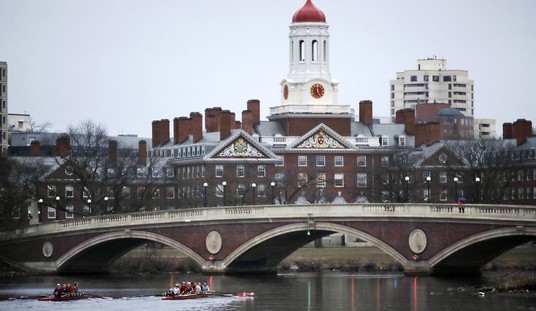The Democratic Party is regional. It’s mostly confined to the urban areas and states that touch salt water. That spells certain doom for a healthy party that’s incapable of winning rural areas. It’s not impossible. They’ve done it before, though it was before the toxic ethos of political correctness and identity politics were thrown into the mix. Now, the party’s hard left turn on immigration and abortion is starting to make moderate to right-leaning Democrats, ones who can win in these regions, difficult to find, let alone support. To complicate matters, there are still healthy numbers of Democrats who think that Hillary Clinton won the election, and that the Russians, FBI, media, and the Democratic National Committee were all part of some nutjob conspiracy to kill her presidential ambitions. There’s even more commentaries about not reaching out to Trump voters (i.e. white working class voters) because they’re not needed to win elections. They’ve learned nothing.
Urban elite: Who cares what them rural voters think!!!!
— Chris Arnade (@Chris_arnade) August 8, 2017
Bubbled elite: Yep. No more stories about them!
Constitution: Well, actually.....
Democrats doled out a rehashed version of Clinton’s 2016 agenda that failed to win over voters, they have no leader, the national party can’t raise money, petty squabbles over abortion and health care could boil over into civil war between the progressive and establishment wings, and they’re about to hit their own geographic wall. Again, it goes without saying, being huddled around urban areas is not the best way to win elections, especially when it comes to congressional elections. The Cook Political Report’s David Wasserman had more:
Even if Democrats were to win every single 2018 House and Senate race for seats representing places that Hillary Clinton won or that Trump won by less than 3 percentage points — a pretty good midterm by historical standards — they could still fall short of the House majority and lose five Senate seats.
[…]
In the last few decades, Democrats have expanded their advantages in California and New York — states with huge urban centers that combined to give Clinton a 6 million vote edge, more than twice her national margin. But those two states elect only 4 percent of the Senate. Meanwhile, Republicans have made huge advances in small rural states — think Arkansas, North and South Dakota, Iowa, Louisiana, Montana and West Virginia — that wield disproportionate power in the upper chamber compared to their populations.
[…]
In 2016, Trump lost the national popular vote by 2.1 percentage points, but Republicans won the median House seat by 3.4 points and the median Senate seat by 3.6 points — that’s the widest Senate gap in at least a century and tied with 2012 for the widest House disparity in the last half-century. That doesn’t mean Democrats can’t win the House and Senate back — they won control of both chambers in 2006 despite a Republican-bias that year, for example — but they’re starting from a truly historic geographic disadvantage, even with the political wind at their back.
[…]
Today, Republicans don’t even need to win any “swing states” to win a Senate majority: 52 seats are in states where the 2016 presidential margin was at least 5 percentage points more Republican than the national outcome. By contrast, there are just 28 seats in states where the margin was at least 5 points more Democratic, and only 20 seats in swing states.
[…]
In 2010, when Democrats passed the health care law Republicans are now seeking to repeal, they needed “yes” votes from all 60 of their senators, including 13 from states that then-President Barack Obama had lost in 2008. What did it take for the party to be able to obtain 60 seats? The Iraq War, Hurricane Katrina and a stock market crash, which generated a huge backlash against President George W. Bush and Republicans in 2008.
Today, it would take even more cataclysmic events under GOP rule to propel Democrats to a supermajority over the next six years. (Of course, those events sometimes happen, particularly given a long enough time frame.) Meanwhile, all Republicans would need to obtain 60 seats would be to win every seat in the 30 states that Trump won — no Clinton states needed.
Recommended
Wasserman added that even if a Democrat wins in 2020, the Senate majority could be solidly Republican, making for any possible changes to institutions, like the Supreme Court, all but impossible for liberals. Yet, what about the health care aspect of this debate? The individual mandate is unpopular, but millions of people are enrolled in Obamacare. The hubbub over possible Medicaid cuts frightened some moderate GOP senators and caused heartburn within the Senate GOP caucus. You all know this fight: one side (the Democrats) will be painted as protecting people, while the other (the GOP) will be seen as heartless ghouls taking people’s health care away. In other words, we’re taking away people’s stuff. There’s no amount of public relations work, or wizards in this field, that can polish that and turn it into a winning message. None. Sean Trende of Real Clear Politics analyzed how the health care debate could impact the 2018 Senate races, which are insanely biased against the Democrats. He placed the races into three tiers. One block has states where Trump’s approval is below the national average. The second is where Trump is slightly above that average, and the third where the president has high approval ratings (i.e. around 50 percent or more). Trende noted that in most of the scenarios he’s run, the GOP picks up seats—though it all depends on whether Trump can rebound to 40 percent approval (he’s below that right now) or better by the time we get into the thick of midterm season:
If we put this together, it is consistent with the interactive Senate tool David Byler and I developed earlier this year. If you simulate the election with Trump’s job approval around 40 percent, the most likely result is that Republicans hold steady or lose a seat, although they gain seats in around a quarter of the scenarios. Whether Republicans end up on the upside of the mean (from their perspective) or the downside probably depends on the extent to which Democratic senators like Tester, Heitkamp and Manchin can maintain their semi-independent brands. The politics of health-care reform probably complicate this.
While a president’s approval rating has historically been a gauge for how his party would do in the midterms if they control Congress, we could see an event where Trump could be relatively unpopular but the Republicans still retain their majority--with an increased Senate majority.























Join the conversation as a VIP Member